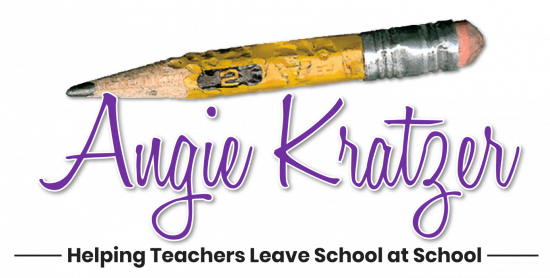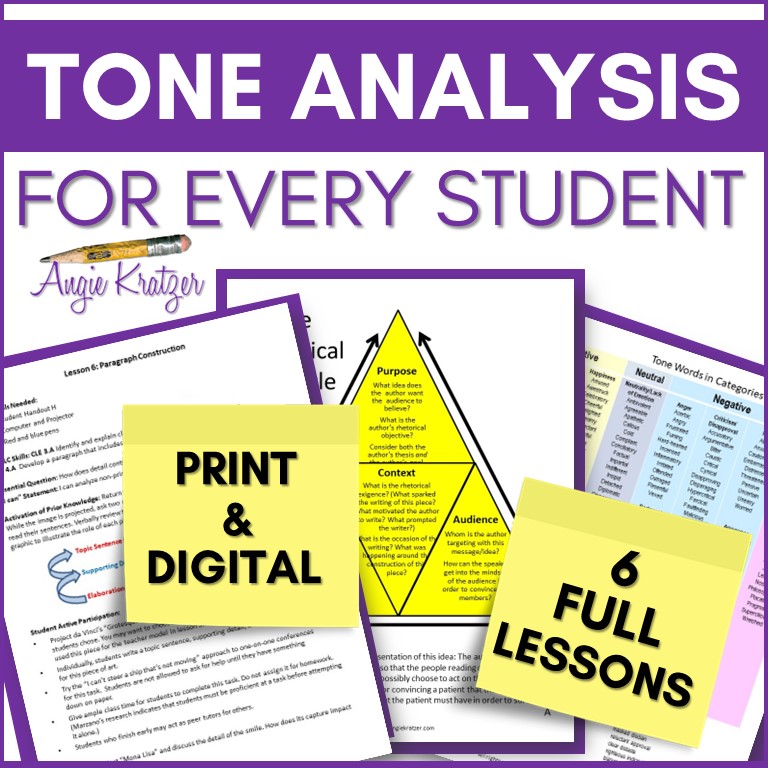
AP Language teachers have STRONG opinions about their reading lists. Get a group of us together in a room, and we are going to part like the Red Sea over whether or not we should teach novels and plays in the course. I hear this line all the time: “There is no fiction on the exam, so you should just stick with short nonfiction.”
Poppycock.
I can only think of one scenario in which fiction should not be woven into an AP Lang syllabus: A teacher has to manage the course on a one-semester block, and the students are weak readers and writers who are under tremendous pressure to made a 3 or above on the AP Lang exam. Just for kicks, let’s say they aren’t feeding into AP Lit.
There are numerous reasons why fiction should be included on an AP English Language reading list.
AP Language students can actually analyze rhetoric within fiction.
We typically think of rhetorical analysis as a non-fiction task, but novels and plays can include speeches, letters, and even essays for students to consider.
I give you Marc Antony’s Act III funeral oration from Julius Caesar. Everybody needs a little Marlon Brando, right?
You can analyze the heck out of the way Antony builds irony through repetition here:
Here, under leave of Brutus and the rest–
For Brutus is an honourable man;
So are they all, all honourable men–
Come I to speak in Caesar’s funeral.
He was my friend, faithful and just to me:
But Brutus says he was ambitious;
And Brutus is an honourable man.
I give you the painful beauty of Pecola Breedlove’s mental dissent in The Bluest Eye. Students can look at the way language reflects trauma.
Fiction can be argument.
Ask Angie Thomas about what she has to say on social justice in The Hate U Give. Consider Chinua Achebe’s Things Fall Apart as an argument against colonialism. Even though a book may be based on an event or a common scenario, it’s still fiction. Even The Crucible! At least half the AP Lang teachers I know get it in because of Miller’s parallels with McCarthyism.
Fiction can also be a jumping off place for argument. In The Catcher in the Rye, Mr. Antolini offers Holden the Wilhelm Steckel line, and we could spend all day building an argument to defend, challenge, or qualify this one:
“The mark of the immature man is that he wants to die nobly for a cause while the mark of the mature man is that he wants to live humbly for one.”
William Steckel
Many LEAs require American Literature be taught in the junior year.
My state requires a survey of American Lit in English III, but there are several ways to make that work. One is to line up with APUSH.
Align your lessons with the AP US History teacher and sprinkle in non-fiction and short fiction for each time period. That’s pretty easy with Revolutionary War letters and documents, but it gets a bit more tricky with the Romantics. Slide in the back door with one of Poe’s articles. Civil War era? Get some Frederick Douglass letters in.
Dreading dragging students kicking and screaming through The Scarlet Letter? Never fear; you can easily get the same Hawthorne stylistic elements, literary devices, and themes in with “The Minister’s Black Veil.”
Dying to teach Catcher in the Rye but aren’t sure what to do with it? Spend time on the unreliable narrator (point of view is a rhetorical strategy, by the way) and have students mimic Holden’s style in a teenage rant about something that’s bugging them. (I even let mine curse in their rants after a lesson on profanity in the novel. We come to an agreement on the no-no list—one I completely direct—and dive in.)
Fiction can provide leverage for other courses.
Want your school’s AP Lit teacher to kiss you square on the mouth? No? You’ll at least get a candy cane in your mailbox at Christmas if you get in some novels and poetry.
When curriculum designers are deciding which skills will be designated power standards, they look at leverage; what skills will give students vertical leverage with the next course and horizontal leverage with material across content areas? Fiction can offer vertical help for AP Lit and horizontal help with courses like AP US History.
What of whole-class novels and plays?
I enjoy experiencing a book together with a group of students. Honestly, in 30 years of teaching, I never did literature circles. There, I’ve confessed.
I want the whole class to find out the identity of Pearl’s father together. When I teach Things Fall Apart with my sophomores, I want to giggle with them about “ashy buttocks.” I only do Euripides’s Medea to see who is going to catch the line about the dry stick.
Let it be known that I am NOT a fan of throwing the baby out with the bathwater when it comes to novels. If you’re going to teach The Scarlet Letter, for heaven’s sake teach the whole thing. I think you can get away with skipping Act IV of most Shakespearean histories, but prose is different. If you’re going to use it, use it. This administration-led trend of banning entire whole-class novels drives me crazy.

How to squeeze in the whole reading list
On days when you need to discuss the novel, do nonfiction bell ringers but devote the bulk of the class to fiction.
Aim for shorter works that still offer a sense of each literary period. (Think Billy Budd over Moby Dick, a Twain short story over Huck Finn, etc.)
Skip the tough texts that will require a lot of hand holding. Invisible Man and Light in August come to mind.
If you are in the awful position of teaching AP Language on the block, you may actually have to cut class novels. (It hurts just to write it.) However, you can still have students read independently outside of class. Students might get both shortlisted choice books and free reign within their zone of proximal development (not too challenging, not too easy). You can learn more about my approach here.
Why The Things They Carried is a MUST
Hands down, my favorite piece to teach from is Tim O’Brien’s The Things They Carried. Because the book crosses over into creative nonfiction, there is a lot of room here for rhetorical analysis. The author uses his characters’ experiences to argue the futility of war, so it is rife for an analysis of argumentation.
I teach the novel in chapter chunks. Within each section, we look at the author’s rhetoric, the thesis each chapter is intended to communicate, and the modes used both as frameworks and methods of development. What do I mean? O’Brien uses narration as both an overarching mode and as a way of developing micro ideas. He has whole chapters that can be described as description and short paragraphs embedded within narration that help to develop the theses.
We write rhetorical analysis and short pieces in each of the other modes. To read more about my approach to The Things They Carried, take a look at this post.
Did you realize that you can teach tone in both fiction and nonfiction. Want six free lessons on teaching tone? Get them here.
The Big Takeaways
Teach short fiction that blends well with the skills laid out in the AP Language Course & Exam Description and fits the characteristics of each American literary period if a survey is required by district curriculum. As much as possible, set aside the notion that content that would never be tested should never be taught.



